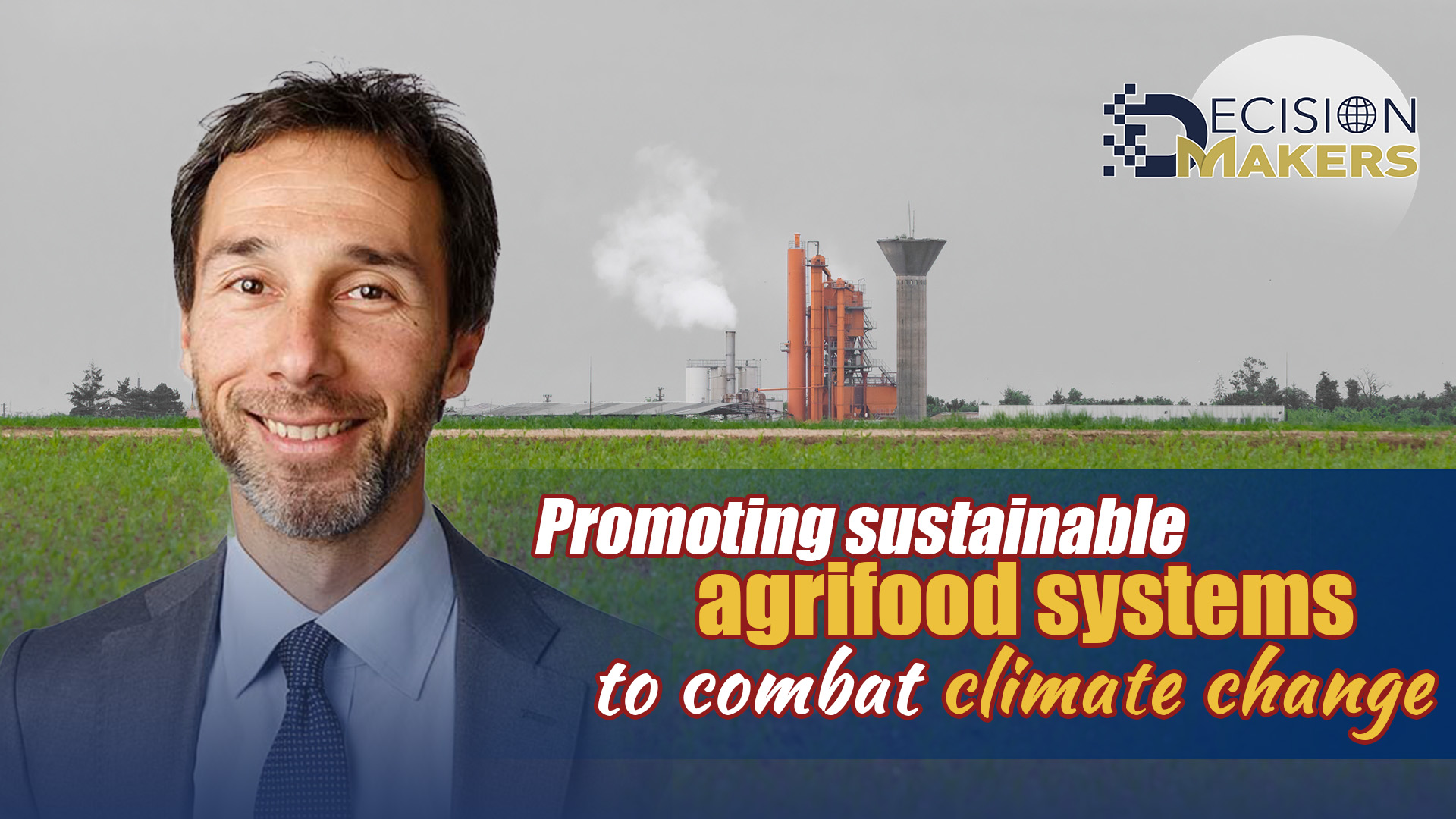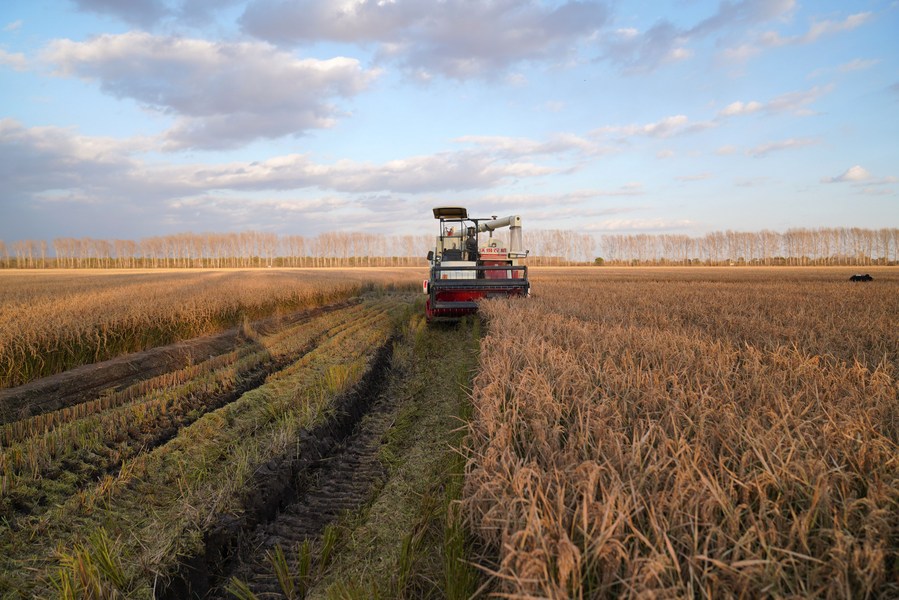
Editor's note: Decision Makers is a global platform for decision makers to share their insights on events shaping today's world. Matteo Marchisio is the country director and representative at the International Fund for Agricultural Development (IFAD). Kisa Mfalila is a lead environment and climate specialist with the IFAD, focusing on Asia and the Pacific region. The article reflects the authors' opinions and not necessarily the views of CGTN.
Six years ago, world leaders came together in Paris and agreed to limit the global increase in temperature to below 2 degrees Celsius. But much of the details on how this target was to be achieved were left to be figured out later.
As world leaders gather in Glasgow at the 26th Conference of the Parties to the United Nations Framework Convention on Climate Change, or COP26, their main objective will be to discuss the details that will deliver on the promises made in Paris.
In August 2021, the Intergovernmental Panel on Climate Change report presented a stark warning on the impacts of climate change. The last seven years have been the warmest on record, punctuated by more frequent and intense floods, an increase in temperature by 2 degrees Celsius, and prolonged droughts that are shifting planting and harvesting times, affecting agrifood systems and communities that rely on them the most.
In face of this gloomy picture, we are aware that no solutions to climate change can be achieved without the active participation of China to address the problem.
China is aware of its role and responsibility to lead the global effort to reduce greenhouse gas emissions and to address climate change. China was one of the 197 countries who signed the Paris Agreement on Climate Change in 2015.
In September 2020, at the General Assembly of the United Nations, Chinese President Xi Jinping indicated China will reach its peak of carbon dioxide emissions before 2030, and achieve carbon neutrality by 2060.
As a follow-up to that announcement, China announced, in December 2020, new nationally determined contribution targets, which strengthened its previous non-fossil share and carbon intensity targets and added a new renewable energy capacity target. China's 14th Five-Year Plan, published in March 2021, also included energy and carbon intensity reduction targets to achieve its nationally determined contribution target.
However, as staff of an international organization whose mission is to promote sustainable rural development – the International Fund for Agricultural Development (IFAD) – we are aware that the ambitious goal of achieving carbon neutrality by 2060 cannot be achieved by relying on a low-carbon transition of the energy system only. To achieve this goal, emission reductions in agrifood systems and the potential of grasslands, wetlands and forests as carbon sink must be considered.
According to the China Food Policy Report, greenhouse gas emissions (GHG) from China's agrifood systems represented less than 10 percent of the total country's GHG emissions in 2018. Yet, the emissions from agrifood systems are high in absolute terms, and, moreover, have been increasing since 1990.

An unmanned harvester works in paddy fields in Hongwei farm, northeast China's Heilongjiang Province, October 15, 2020. /Xinhua
An unmanned harvester works in paddy fields in Hongwei farm, northeast China's Heilongjiang Province, October 15, 2020. /Xinhua
Greenhouse gas emissions from agricultural activities represent about 70 percent of the emissions from the country's agrifood systems. Improving agricultural technologies by, for instance, reducing the use of chemical fertilizers, promoting green pesticides, adopting improved livestock production management and other sustainable agricultural technologies and practices can thus significantly reduce the amount of greenhouse gas emissions from agrifood systems.
If these measures are combined with shifting dietary patterns, it is estimated that, according to the report, greenhouse emissions from agrifood systems can be reduced by almost 50 percent in 2060, thus significantly contributing to the country's total emissions reduction.
In addition to that, land use change and forestry as carbon sink offer a considerably cost-effective approach to reduce greenhouse gas emissions. According to the China Food Policy Report, the carbon sequestration from forestland, farmland, grassland and wetland could almost completely offset greenhouse gas emissions from the agrifood systems by 2060.
IFAD has supported China in this effort. The poverty alleviation projects in south Gansu Province, for instance, introduced various measures to restore degraded ecosystems in the project areas, including through the rehabilitation of pastureland and reforestation.
Similarly, the Environmental Conservation and Poverty Reduction Project in Shanxi and Ningxia contributed to enhance the carbon sink capacity of the project area by rehabilitating almost 13,000 hectares of rangeland and developing or protecting more than 7,000 hectares of forestland. Other projects in other provinces contributed to enhance the overall carbon sink capacity of the country.
The importance of investing in sustainable agricultural technologies and practices and reforestation globally is also highlighted in a recent study by McKinsey. The study suggested that investments in agrifood systems have the potential to reduce about 20 percent of total global emissions by 2050 globally.
The study confirms the important role that agriculture can play in driving solutions to reduce greenhouse gas emissions, and the importance of investing in sustainable agricultural technologies and practices and reforestation.
The Global Commission on Adaptation has estimated that if $1.8 trillion is invested in "climate-smart" agriculture and technologies, then $7.1 trillion could be generated in avoided costs and social and environmental benefits such as reducing greenhouse emissions through carbon sinks.
We believe this would be money well spent.
(If you want to contribute and have specific expertise, please contact us at opinions@cgtn.com.)

